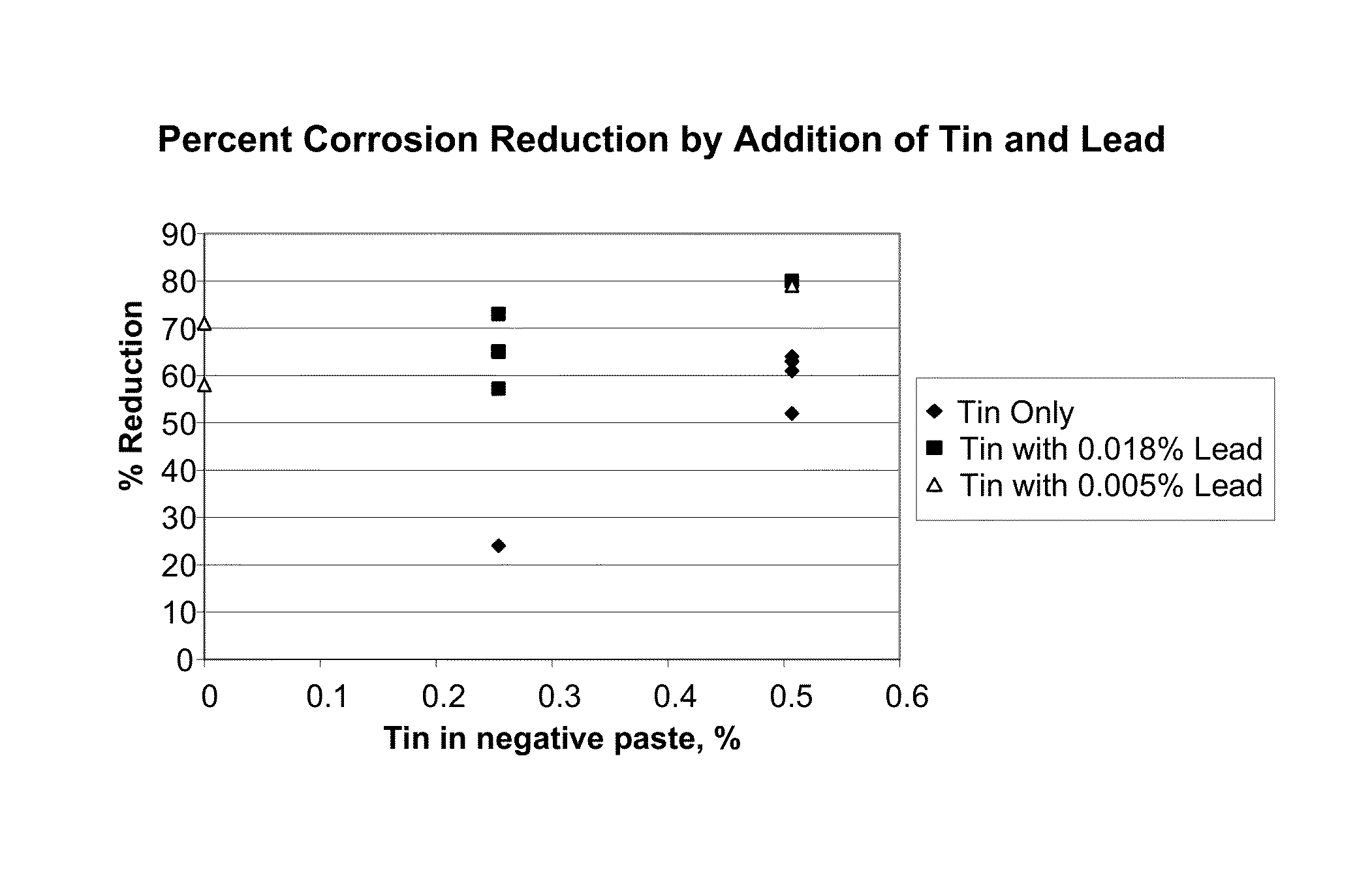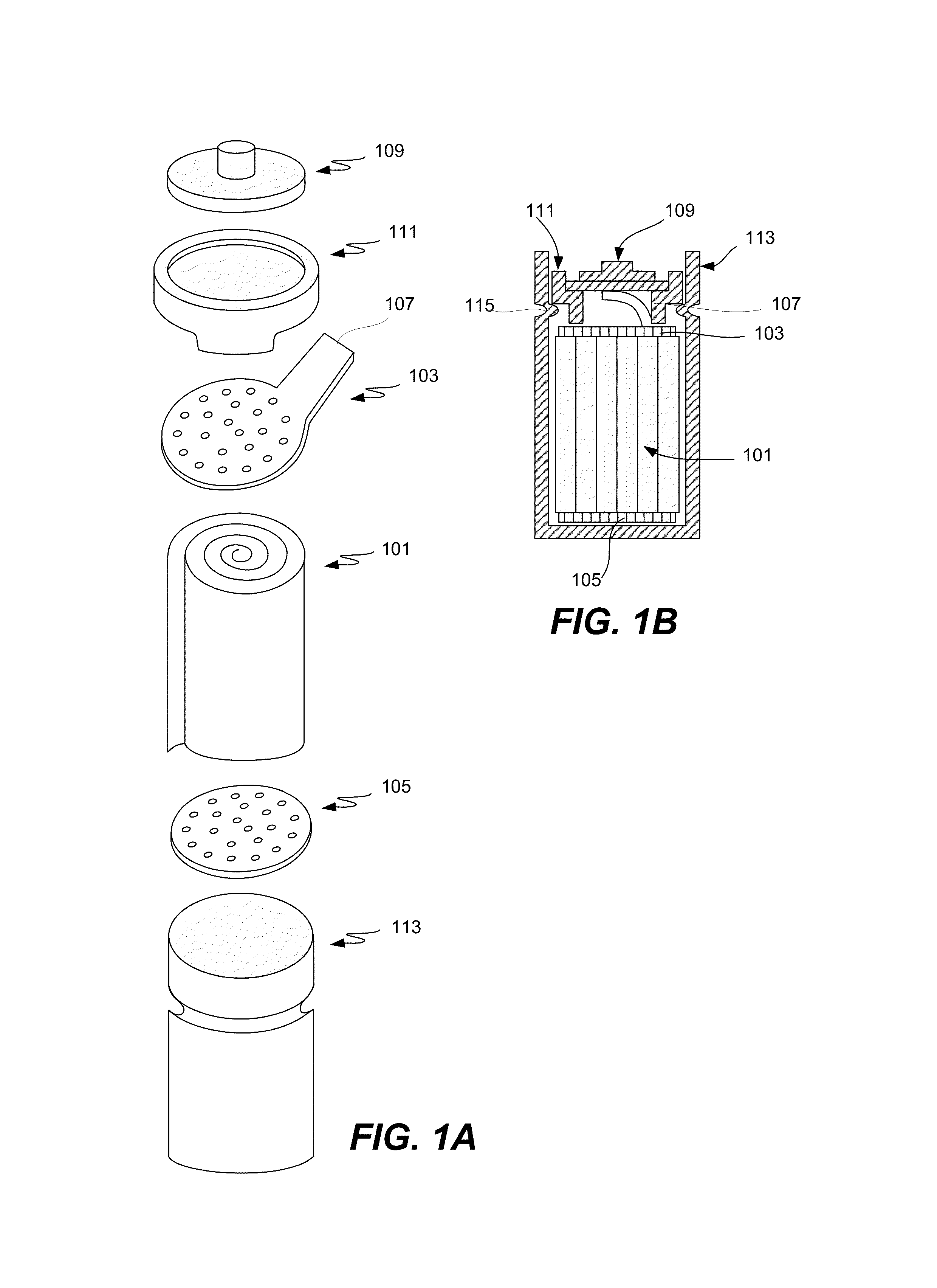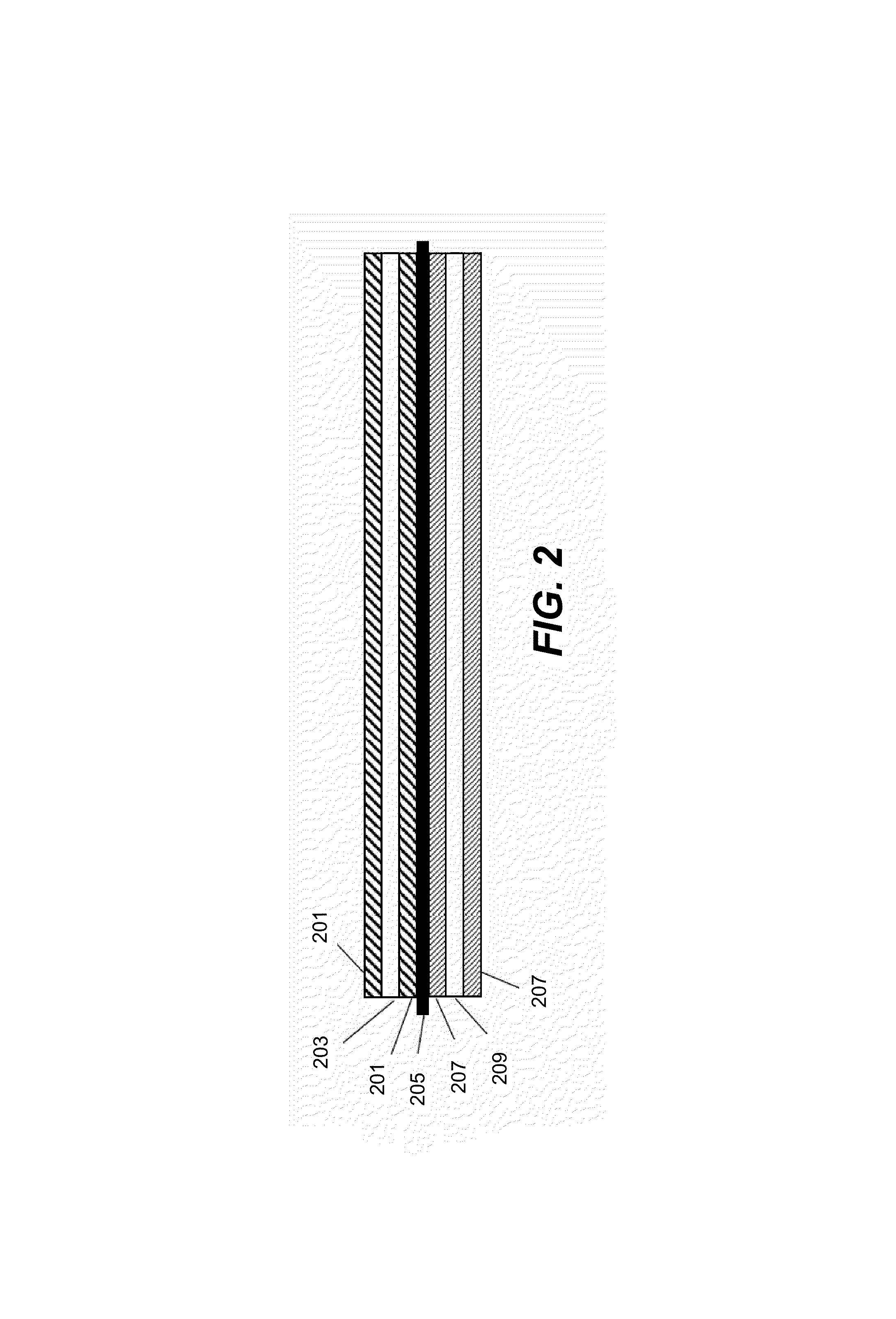Pasted zinc electrode for rechargeable nickel-zinc batteries
a nickel-zinc battery and zinc electrode technology, applied in the field of rechargeable nickel-zinc batteries, to achieve the effect of less hydrogen gassing, stable viscosity, and easy work
- Summary
- Abstract
- Description
- Claims
- Application Information
AI Technical Summary
Benefits of technology
Problems solved by technology
Method used
Image
Examples
Embodiment Construction
[0022]Embodiments of the present invention are described herein in the context of manufacturing a negative zinc-zinc oxide electrode and in the context of a negative zinc-zinc oxide active material for a nickel-zinc cell. Those of ordinary skill in the art will realize that the following detailed description of the present invention is illustrative only and is not intended to be in any way limiting. Other embodiments of the present invention will readily suggest themselves to skilled persons having the benefit of this disclosure. For example, this invention may be used in other rechargeable batteries such as silver-zinc or zinc-air batteries. In this disclosure, the terms “battery” and “cell” may be used interchangeably.
INTRODUCTION
[0023]The present invention provides an improved process for making negative electrodes for use in rechargeable zinc cells. The present invention renders the manufacturing process much more manageable. The resulting rechargeable cells of the present inven...
PUM
| Property | Measurement | Unit |
|---|---|---|
| size | aaaaa | aaaaa |
| size | aaaaa | aaaaa |
| size | aaaaa | aaaaa |
Abstract
Description
Claims
Application Information
 Login to View More
Login to View More - R&D
- Intellectual Property
- Life Sciences
- Materials
- Tech Scout
- Unparalleled Data Quality
- Higher Quality Content
- 60% Fewer Hallucinations
Browse by: Latest US Patents, China's latest patents, Technical Efficacy Thesaurus, Application Domain, Technology Topic, Popular Technical Reports.
© 2025 PatSnap. All rights reserved.Legal|Privacy policy|Modern Slavery Act Transparency Statement|Sitemap|About US| Contact US: help@patsnap.com



